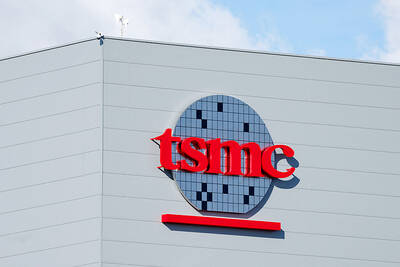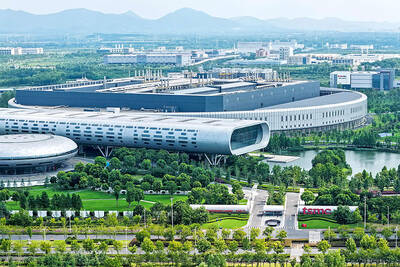An offshore wind developer is opening a hub in Providence, Rhode Island, that its executives hope will help accelerate the takeoff of the industry in the US.
Orsted US Offshore Wind, a division of the Denmark-based Orsted A/S, is to launch its US innovation hub in Providence today.
Orsted employees are to meet at the hub with US-based start-ups and small companies to discuss early-stage technologies to address issues the industry faces.
Orsted could potentially help these companies bring solutions to the market faster to help accelerate and scale the US industry, Orsted head of strategy, digital and innovation Thomas Nygaard Hamann said.
“In essence, a lot of this is really about taking the global know-how that we bring on this industry and connecting that to novel innovation in the US,” the Copenhagen-based Hamann said.
For example, Orsted is looking for ways to improve monitoring the movements of whales near wind farms, and ideas for reducing noise when turbines are installed, Hamann said.
Last year, to ensure that its technicians could safely transfer between small boats and offshore wind turbines, Orsted signed a deal to invest in the Scottish company Pict Offshore, which had developed a hoist system.
Orsted bought Providence-based Deepwater Wind in 2018. Deepwater Wind began operating the first US offshore wind farm off of Rhode Island’s Block Island in late 2016.
The US operations for Orsted are jointly headquartered in Providence and Boston, Massachusetts.
Rhode Island Governor Gina Raimondo said the hub’s opening further cements the state’s “status as America’s offshore wind capital.”
Several offshore wind and renewable energy companies have offices in Providence. The state offers tax credits and incentives to lure more of these businesses to Rhode Island, and launched a program in 2018 to train students for offshore wind industry jobs.
“It’s my hope that this will just keep building on itself, and over time you’re going to see, in Rhode Island, more supply-chain companies to service the offshore wind farm, more energy storage companies, more undersea mapping technologies,” Raimondo said in an interview last week. “It’s a whole ecosystem and it’s starting to build right here.”
Orsted has US federal lease areas in the US’ northeast and in the mid-Atlantic, where a total of six wind farms are in development. The northeast wind farms are joint ventures with Eversource.
Driving down the pricing for offshore wind has been, and will continue to be, an important driver of innovation, Orsted Northeast markets head Matthew Morrissey said.
However, they are looking to evolve every aspect of their business to improve the standardization, safety and overall operation of wind farms, as well as create jobs locally, he said.
The hub is to serve as the first point of contact for US companies interested in contracting with Orsted.
Morrissey said the goal is to make it easy for companies to make a pitch, get clear information and perhaps contracts.
The Danish parent company employs about 6,500 people and reported revenue for the group at 9.1 billion euros (US$10 billion) last year.
Orsted considered locating the hub in Boston or Cambridge, but Morrissey said Providence was the clear choice.

Taiwan Semiconductor Manufacturing Co (TSMC, 台積電) secured a record 70.2 percent share of the global foundry business in the second quarter, up from 67.6 percent the previous quarter, and continued widening its lead over second-placed Samsung Electronics Co, TrendForce Corp (集邦科技) said on Monday. TSMC posted US$30.24 billion in sales in the April-to-June period, up 18.5 percent from the previous quarter, driven by major smartphone customers entering their ramp-up cycle and robust demand for artificial intelligence chips, laptops and PCs, which boosted wafer shipments and average selling prices, TrendForce said in a report. Samsung’s sales also grew in the second quarter, up

On Tuesday, US President Donald Trump weighed in on a pressing national issue: The rebranding of a restaurant chain. Last week, Cracker Barrel, a Tennessee company whose nationwide locations lean heavily on a cozy, old-timey aesthetic — “rocking chairs on the porch, a warm fire in the hearth, peg games on the table” — announced it was updating its logo. Uncle Herschel, the man who once appeared next to the letters with a barrel, was gone. It sparked ire on the right, with Donald Trump Jr leading a charge against the rebranding: “WTF is wrong with Cracker Barrel?!” Later, Trump Sr weighed

LIMITED IMPACT: Investor confidence was likely sustained by its relatively small exposure to the Chinese market, as only less advanced chips are made in Nanjing Taiwan Semiconductor Manufacturing Co (TSMC, 台積電) saw its stock price close steady yesterday in a sign that the loss of the validated end user (VEU) status for its Nanjing, China, fab should have a mild impact on the world’s biggest contract chipmaker financially and technologically. Media reports about the waiver loss sent TSMC down 1.29 percent during the early trading session yesterday, but the stock soon regained strength and ended at NT$1,160, unchanged from Tuesday. Investors’ confidence in TSMC was likely built on its relatively small exposure to the Chinese market, as Chinese customers contributed about 9 percent to TSMC’s revenue last

LOOPHOLES: The move is to end a break that was aiding foreign producers without any similar benefit for US manufacturers, the US Department of Commerce said US President Donald Trump’s administration would make it harder for Samsung Electronics Co and SK Hynix Inc to ship critical equipment to their chipmaking operations in China, dealing a potential blow to the companies’ production in the world’s largest semiconductor market. The US Department of Commerce in a notice published on Friday said that it was revoking waivers for Samsung and SK Hynix to use US technologies in their Chinese operations. The companies had been operating in China under regulations that allow them to import chipmaking equipment without applying for a new license each time. The move would revise what is known